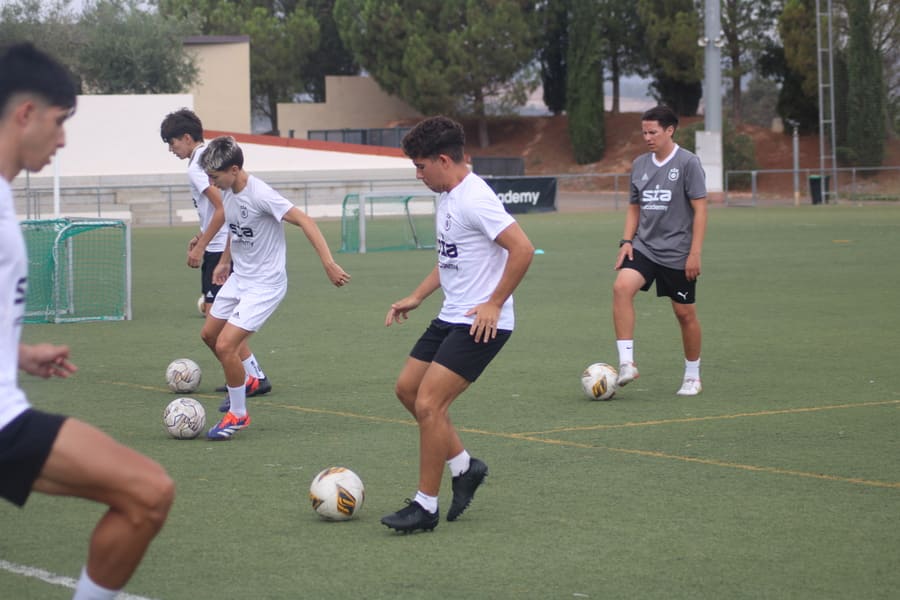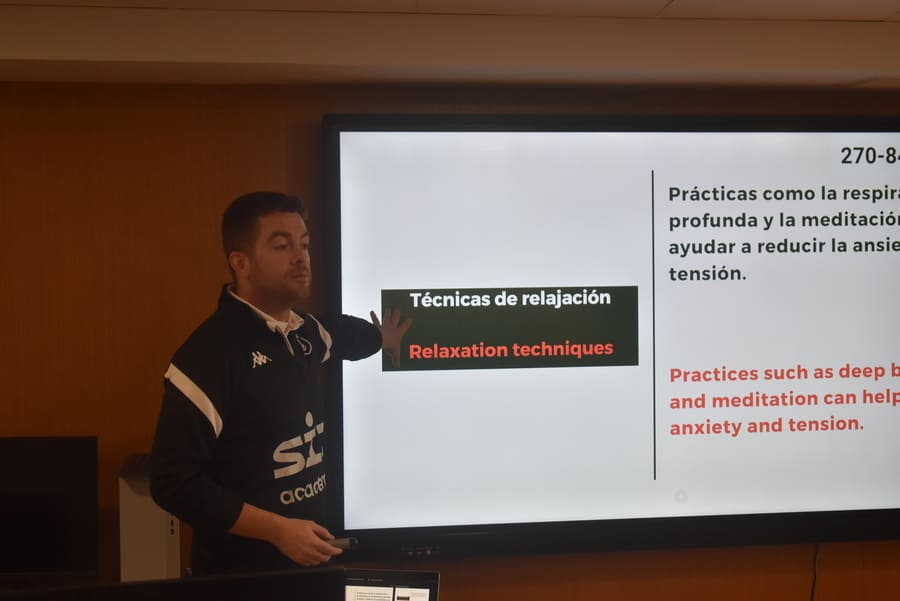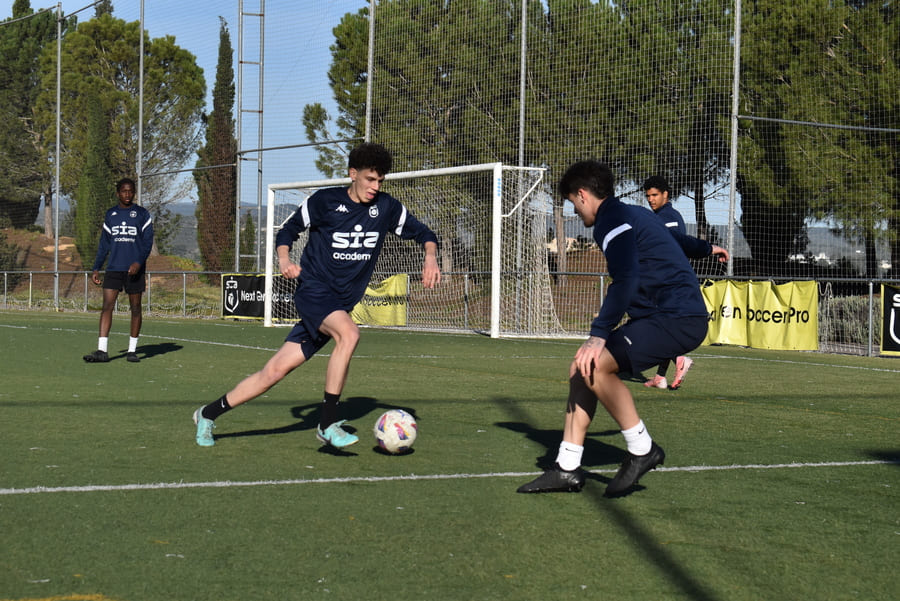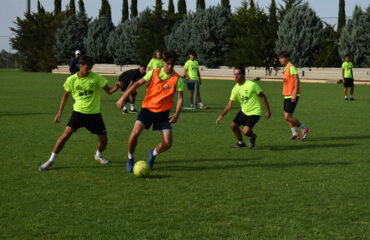Modern football demands much more than talent. In academies like SIA Academy, a player’s development is approached from a comprehensive and personalized perspective. It’s not enough to train well—progress must be measured objectively, continuously, and across multiple dimensions. This not only improves performance but also promotes personal growth and prepares the player to compete at the highest level.
Here are the most important ways to assess progress within a high-performance academy.
Table of contents
1. Technical evaluation: the core of the game
Individual technique is one of the most closely observed and measured aspects in youth development. Ball control, passing, dribbling, shooting, and first touch are fundamental skills that make a difference.
At SIA Academy, these skills are not assessed in isolation, but in real game contexts. They are analyzed during specific training drills and matches to evaluate not just technical execution, but also tactical application and effectiveness under pressure.
Additionally, coaches provide regular performance reports where each player’s technical evolution is tracked, helping set personalized goals.

2. Physical capacity and athletic evolution
A modern footballer must also be a complete athlete. Physical tests are conducted regularly to measure speed, strength, agility, endurance, and body composition. These metrics are compared over time to detect improvement, stagnation, or setbacks.
The use of GPS trackers and monitoring devices during training and matches has revolutionized this area. It is now possible to know how many kilometers a player covers, how many sprints they perform, what effort zones they reach, and how their body responds to various loads.
This approach is not only performance-oriented: it also helps prevent injuries, manage recovery, and tailor training sessions to optimize results.
3. Tactical understanding and game intelligence
A technically gifted player who doesn’t understand the game will struggle to perform at the highest level. That’s why tactical awareness is another key criterion when measuring progress.
This includes positioning, game reading, anticipation, and decision-making in different scenarios. At SIA Academy, this aspect is assessed through video analysis, where each player reviews their actions with the coaching staff to identify strengths and areas for improvement.
Tactical intelligence is also trainable, and progress becomes evident when players start making better decisions faster, adapt to different systems, and understand how to influence the flow of the match.
4. Mental strength and psychological development
One of the biggest differences between average players and elite players lies in mental strength. Attitude, focus, resilience, and competitive mindset are just as important as technical skill.
At SIA Academy, sports psychologists help develop these aspects. Players are assessed on how they react to pressure, mistakes, failure, and key match moments.
Leadership, communication, and the ability to take responsibility are also closely observed. A player’s mental development becomes clear in their confidence, consistency, and ability to bounce back from adversity.

5. Behavior and progress in personal development
Developing a player also means educating them as a person. At comprehensive programs like SIA’s, daily behavior and academic performance are also considered.
Punctuality, respect for coaches and teammates, responsibility with daily tasks, and adherence to academy rules are part of the overall evaluation. The goal is not only to create good footballers but also disciplined, well-rounded individuals.
Additionally, for players who combine football with academics, school performance is also tracked, as it reflects their level of commitment and organizational skills.
6. Internal comparison and external standards
One effective way to measure progress is through comparisons—not to compete with others, but to grow. Players are compared with their previous performances (to track progress), with their teammates (to understand their role in the group), and with external benchmarks such as players in professional clubs or national teams.
This system allows for informed decisions: whether a player is ready to move up a level, earn minutes in key matches, or even attract attention from scouts or national selectors.
Stats, technical and physical reports, and performance analysis form the foundation for these evaluations.
Measuring a player’s progress at an academy like SIA Academy is a continuous and comprehensive process. It’s not just about whether they play well—it’s about tracking their evolution in technique, physical condition, tactics, mentality, and behavior.
This 360º approach ensures each footballer can reach their full potential both on and off the pitch. Because the real goal is not just to train athletes, but to form competitors with a winning mindset, ready to shine in professional football and face life’s challenges with strength, intelligence, and preparation.






